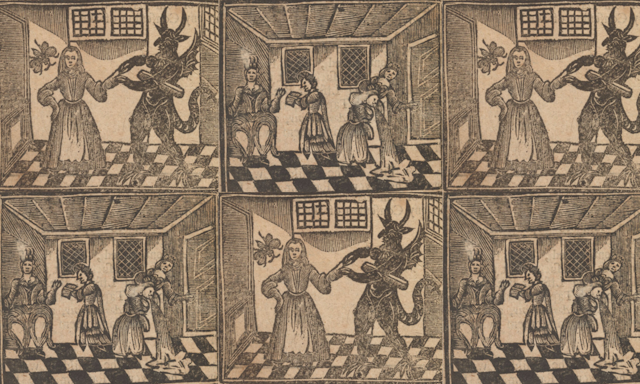This article includes mention of suicide and self-harm
If someone swallows a pin today, it’s likely to be interpreted as an unfortunate accident or perhaps, as depicted in the 2019 film Swallow, an example of the eating disorder pica, which involves the consumption of non-food items. Though pin-swallowing is still sometimes identified in individual medical cases as having suicidal intent, this is often not the automatic conclusion.
But in early modern British society, where pins were ubiquitous, there were widespread fears about them being consumed. Though it seems that pins did little harm, the fear of the damage they might cause resulted in their association with and use by women who attempted suicide – and with demonic posession.
The metaphor of the “crooked pin in the pudding” is suggestive of this worry that pins might end up in places they shouldn’t and be ingested by people. In one incident in 1718, a pin was found in an egg being eaten by one Mr McGill, the minister of Kinross, near Perth, Scotland, which he narrowly avoided consuming.

This fear of swallowing pins was likely influenced by their widespread nature in early modern society. Pins were used to hold together clothing, style hair, organise documents and, of course, for sewing.
The ready availability of pins meant that they were also a potential danger to those who wished to do themselves harm. A young woman named Helen Fairfax was tempted to end her life using a pin at her family home in Yorkshire in 1621.
As Helen explained it, the devil approached her and offered her various means of suicide, including to “take a pin out of her clothes and put it into her mouth”. Helen rebuked the devil, and was ultimately able to resist these temptations.
Owing to medical intervention, swallowed pins rarely severely harm people in the modern day. Similarly, there are no records of 17th-century people who died as a result of swallowing a pin. But this act was believed to be intensely dangerous by them.
Early modern people believed that the devil was constantly looking for ways to tempt them towards sin. Pins crop up regularly in stories of demonic temptation and possession like that of Helen Fairfax, likely because, particularly for women, they were always at hand.
A case reported by physician Joseph Blagrave (1610-1682) speaks to the concerns people had. He described his treatment of a girl in Basingstoke in southern England, who was believed to be demonically possessed. Among her symptoms were repeated attempts to put pins in her mouth.
This behaviour alarmed her parents who feared “she should choke herself with it”. The girl tried to swallow the items so often that they had “a box near full” of confiscated pins.
Hysterical women
In the later 18th century, ideas surrounding pin-swallowing began to change. It was increasingly associated with “hysteria”, an historical illness involving anxiety and excess emotion which was commonly associated with women, and the asylum.
By the 19th century, self-injurious behaviours such as swallowing or inserting pins into the body gained an increasingly moral dimension. As the history of medicine academic Sarah Chaney explains, doctors saw these kinds of acts as an indication of self-obsession and of the inability of the individual to contribute towards society.
In his 1857 work, A Collection of Remarkable Cases in Surgery, the American surgeon Paul F. Eve (1806-1877) detailed a vast number of medical accounts. Among these was an “extraordinary case of pin-swallowing”, which, in Eve’s words, involved a girl in Vienna with “an aberration of intellect” who “attempted to destroy her life by swallowing a great quantity of pins”.

Eve comes across as dismissive of the girl and her experience, an attitude also expressed in his account of another pin-swallowing case, of which he chose to “omit some of the tedious narrative”.
Although 17th-century people had been alarmed by pin-swallowing, their reactions do not suggest the explicit condemnation or shaming of the people that 19th-century medical works, such as Eve’s, do. This is despite the fact that the act of suicide was both a crime and a sin in this period.
In part, 17th-century responses may be influenced by the claims of many pin-swallowers of being demonically possessed, which might serve to exonerate them of blame for their behaviour. Though early modern people were expected to resist the devil’s temptation, they were not necessarily held responsible for experiencing it.
It also seems that family members and friends were more concerned about the wellbeing of their loved ones than the potential criminal dimension of their actions.
If this article has raised issues for you, or if you’re concerned about someone you know, call Samaritans on 116 123

Looking for something good? Cut through the noise with a carefully curated selection of the latest releases, live events and exhibitions, straight to your inbox every fortnight, on Fridays. Sign up here.

